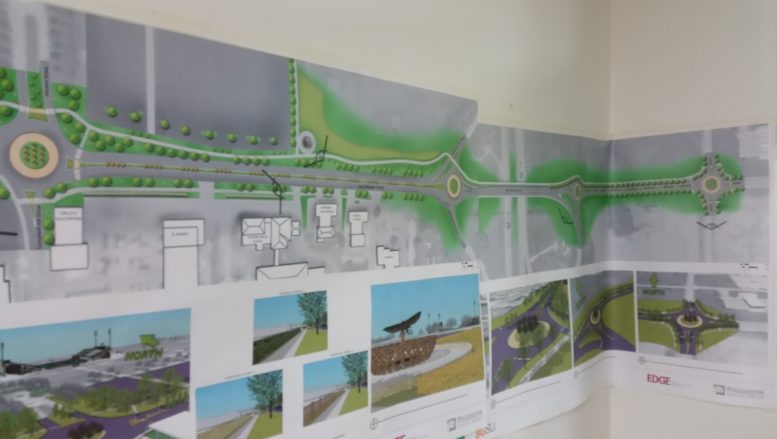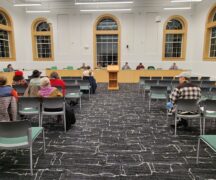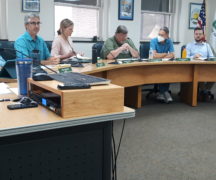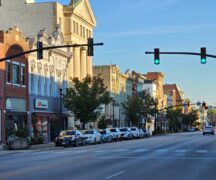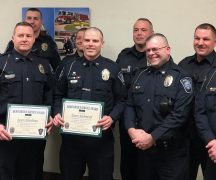By JAN LARSON McLAUGHLIN
BG Independent News
With construction of two roundabouts underway on the east side of Bowling Green, the city is taking steps to start preliminary work on a third.
On Monday evening, Bowling Green City Council will hear the first reading of legislation allowing city officials to seek bids and enter into a contract for work on a roundabout at the intersection of East Wooster Street and Campbell Hill Road.
The contracts would be for design, engineering, right-of-way acquisition, construction and other services needed to replace the existing four-way stoplight intersection with a roundabout.
In 2014, the city’s East Wooster Street corridor was identified as an inefficient entryway into the city and Bowling Green State University. In 2015, an East Wooster Street Corridor Study was completed. That study recommended a roundabout at Wooster and Campbell Hill.
At the same time, the Ohio Department of Transportation authorized the design and construction of two additional roundabout at the Interstate 75 entrance and exit ramps on East Wooster Street. Those roundabouts are currently under construction.
The proposed roundabout at Campbell Hill is connected to the overpass improvements. Once the roundabout is constructed, a proposed median can be placed on East Wooster Street between I-75 and Campbell Hill.
According to city officials, the median is recommended as a safety improvement for the corridor since left turns from driveways in the area are challenging and pose a safety risk.
This newer roundabout proposal was awarded Transportation Improvement Plan funding that will be released on July 1, 2022. Construction will likely be in 2023. The TIP funding will pay for $915,000 of the estimated $1.5 million cost of the project.
Though not on City Council’s agenda for Monday, the city is also planning another roundabout on the east side of the I-75 overpass at the intersection of Dunbridge Road and East Wooster Street.
Also being considered on the east side of the city is a possible roundabout at the intersection Napoleon Road and Campbell Hill Road. According to Wood County Engineer John Musteric, the Campbell Hill-Napoleon intersection was identified on a list compiled by the Ohio County Engineers Association as one of the worst intersections in the region for accidents.
The city administration has posted the following information on roundabouts on the city website in an effort to answer common questions about the rotaries.
- Roundabouts are designed to be safer and more efficient than a traditional intersection. The design of the roundabout creates a low speed (20-30 mph) environment and prevents high angle crashes such as “T-bone” crashes. Low angle, low speed crashes tend to be less severe than higher angle, high speed crashes.
- Roundabouts are more efficient. Vehicles are able to move more quickly through the intersection because of the “yield at entry” – drivers only have to watch for traffic from the left, and if there is an adequate gap available, they can enter the intersection without stopping. Once in the roundabout, drivers have the right-of-way, so they will not have to stop or yield to exit. If the driver does need to yield at entry to traffic inside the roundabout, their delays are brief and typically less than the time they would have been delayed at a traffic signal.
- The design makes room for semi-trucks. Incorporated into the design of roundabouts is something called a “truck apron.” The truck apron is the area between the central island and the roadway that is mountable by larger vehicles but not used by passenger vehicles. Typically this area is concrete versus the roadway which is asphalt.
- According to the U.S. Department of Transportation Federal Highway Administration, roundabouts reduce the types of crashes where people are seriously hurt or killed by 78-82 percent when compared to conventional stop-controlled and signalized intersections.

